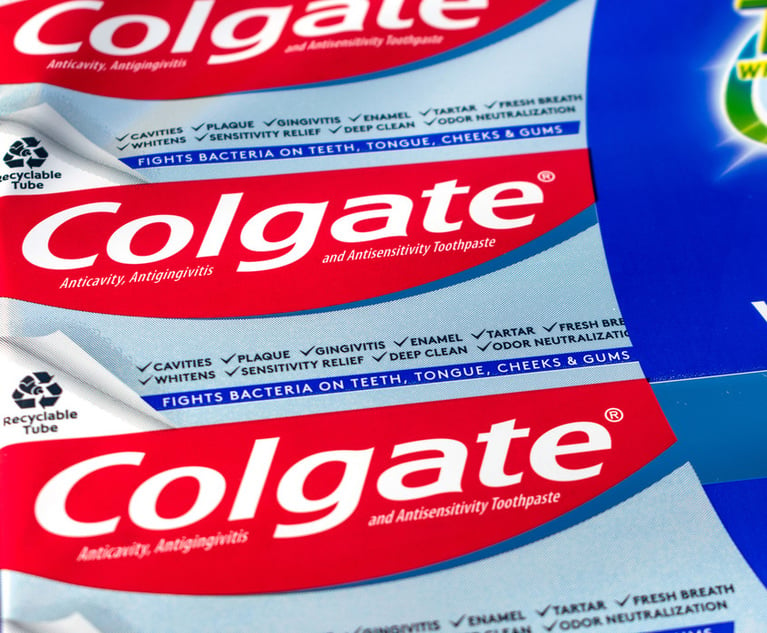Follow-on IPR Petitions: Dead in the Water?
The decision in 'General Plastic' is a clear warning shot to accused infringers that they need to maximize the quality and strength of any IPR petitions, as the PTAB is very unlikely to permit the same petitioner to file a second petition against the same claims under most circumstances.
October 03, 2017 at 09:30 PM
6 minute read
 Harper Batts
Harper BattsOn Sept. 6, 2017, in an expanded panel decision including Chief Judge Ruschke, the PTAB formally adopted the standard first introduced in NVIDIA Corp. v. Samsung Elec. Co., Case IPR2016-00134 (PTAB May 4, 2016), to determine when a petitioner can file a second petition against the same patent. The decision in General Plastic Industrial Co., Ltd. v. Canon Kabushiki Kaisha (which has since been designated “influential”) is a clear warning shot to accused infringers that they need to maximize the quality and strength of any IPR petitions, as the PTAB is very unlikely to permit the same petitioner to file a second petition against the same claims under most circumstances. Given their clamoring for action by the PTAB against “serial attacks”, Patent Owners will view General Plastic as a significant win.
While the General Plastic decision professes that the NVidia factors allow for a flexible approach to determine whether to allow follow-on petitions, the decision appears to foreclose filing in most circumstances any “follow-on” petitions filed after receipt of an Institution Decision. Below is a brief analysis of the factors, as well as likely broader strategy implications stemming from the General Plastic decision.
Factor 1: Whether the same petitioner previously filed a petition directed to the same claims of the same patent
This factor will invariably favor the Patent Owner, as a petition is not a “follow-on” petition by definition if it is not challenging the same claim or claims of a previous petition. Thus if the NVidia test applies to a petition, this factor will invariably favor the Patent Owner.
Factor 2: Whether at the time of filing of the first petition the petitioner knew of the prior art asserted in the second petition or should have known of it
In many ways, the PTAB has now adopted the estoppel test set forth by the Federal Circuit in Shah Industries when addressing follow-on petitions. While this factor has not been addressed in sufficient decisions to know its precise bounds, it is likely that the PTAB will determine that a Petitioner “should have known” of art it includes in a subsequent petition.
Factor 3: Whether at the time of filing of the second petition the petitioner already received the patent owner's preliminary response to the first petition or received the Board's decision on whether to institute review in the first petition
This factor also favors Patent Owners by treating negatively a new petition filed either after a Preliminary Response or an Institution Decision has occurred. Application of this factor will prevent accused infringers from relying upon statements or claim construction positions first raised by a Patent Owner in its Preliminary Response. Thus this factor will frequently favor Patent Owners as Petitioners will rarely file a “follow-on” petition during the 3-4 month window prior to the filing of a Preliminary Patent Owner Response.
Factor 4: The length of time that elapsed between the time the petitioner learned of the prior art asserted in the second petition and the filing of the second petition
One of the few factors that can actually sway in a Petitioner's favor, this factor essentially requires a Petitioner to promptly file a new IPR upon finding any additional art for usage in a second petition. This factor could eliminate the need for Factor 2 above.
Factor 5: Whether the petitioner provides adequate explanation for the time elapsed between the filings of multiple petitions directed to the same claims of the same patent
Arguably, this should be the most important of the NVidia factors, as it goes to the core of Patent Owners concerns about serial IPR filings against a patent – an explanation for why a Petitioner has chosen (and should be permitted) to file a subsequent petition against the same patent or claims. The General Plastic decision appears to state that an argument must be deemed “surprising” even though any argument concerning the validity of the challenged claims “could” have been addressed in the first petition. Future panels may find a rigorous analysis of this Factor persuasive, as a Petitioner may be able to successfully point to arguments a Patent Owner raises that deviate from prior positions – including in particular positions that are inconsistent with the Patent Owner's interpretation of the claims in underlying litigation.
Factor 6: The finite resources of the Board; and
Factor 6 is also unlikely to have meaning, as the Board will likely always point to finite resources as favoring the Patent Owner.
Factor 7: The requirement under 35 U.S.C. § 316(a)(11) to issue a final determination not later than 1 year after the date on which the Director notices institution of review.
Similar to Factor 6, Factor 7 is another factor that will likely always favor the Patent Owner and does not address the specific merits or reasons for a particular petition.
Considerations and Strategies in Light of the General Plastic Decision
So how does General Plastic guide alleged infringers and Patent Owners? The General Plastic decision represents a significant power shift back to Patent Owners, who can now likely prevent any subsequent IPR filings, giving Petitioners a single shot at invalidity before the PTAB. These developments, combined with the PTAB's overall trend of increasingly denying IPR petitions (at least for a subset of challenged claims) will force accused infringers to increase the budgets for IPR petitions, shrink the pool of counsel that are hired for IPR proceedings to only those with extensive PTAB experience, and make defendants re-think overall litigation strategies beyond just the PTAB.
While in recent years many defendants have rushed to file an IPR to obtain a stay of litigation and reduce litigation costs, General Plastic will move this decision inflection point in at least some cases, providing defendants an incentive to wait longer to file an IPR, or even for defendants to consider waiting to file their own IPR until after another defendant's IPR has reached the Institution Decision stage.
On the Patent Owner Side, General Plastic should embolden new patent litigation filings, as Patent Owners will likely only need to evade one wave of petitions from any defendant. Overall, General Plastics represents a significant shift in the patent assertion landscape that should be closely watched.
Harper Batts is a partner in the Palo Alto office of Baker Botts whose practice focuses on intellectual property, PTAB trials, and technology.
This content has been archived. It is available through our partners, LexisNexis® and Bloomberg Law.
To view this content, please continue to their sites.
Not a Lexis Subscriber?
Subscribe Now
Not a Bloomberg Law Subscriber?
Subscribe Now
NOT FOR REPRINT
© 2025 ALM Global, LLC, All Rights Reserved. Request academic re-use from www.copyright.com. All other uses, submit a request to [email protected]. For more information visit Asset & Logo Licensing.
You Might Like
View All



Colgate Faces Class Actions Over ‘Deceptive Marketing’ of Children’s Toothpaste
Trending Stories
- 1Two More Victims Alleged in New Sean Combs Sex Trafficking Indictment
- 2Jackson Lewis Leaders Discuss Firms Innovator Efforts, From Prompt-a-Thons to Gen AI Pilots
- 3Trump's DOJ Files Lawsuit Seeking to Block $14B Tech Merger
- 4'No Retributive Actions,' Kash Patel Pledges if Confirmed to FBI
- 5Justice Department Sues to Block $14 Billion Juniper Buyout by Hewlett Packard Enterprise
Who Got The Work
J. Brugh Lower of Gibbons has entered an appearance for industrial equipment supplier Devco Corporation in a pending trademark infringement lawsuit. The suit, accusing the defendant of selling knock-off Graco products, was filed Dec. 18 in New Jersey District Court by Rivkin Radler on behalf of Graco Inc. and Graco Minnesota. The case, assigned to U.S. District Judge Zahid N. Quraishi, is 3:24-cv-11294, Graco Inc. et al v. Devco Corporation.
Who Got The Work
Rebecca Maller-Stein and Kent A. Yalowitz of Arnold & Porter Kaye Scholer have entered their appearances for Hanaco Venture Capital and its executives, Lior Prosor and David Frankel, in a pending securities lawsuit. The action, filed on Dec. 24 in New York Southern District Court by Zell, Aron & Co. on behalf of Goldeneye Advisors, accuses the defendants of negligently and fraudulently managing the plaintiff's $1 million investment. The case, assigned to U.S. District Judge Vernon S. Broderick, is 1:24-cv-09918, Goldeneye Advisors, LLC v. Hanaco Venture Capital, Ltd. et al.
Who Got The Work
Attorneys from A&O Shearman has stepped in as defense counsel for Toronto-Dominion Bank and other defendants in a pending securities class action. The suit, filed Dec. 11 in New York Southern District Court by Bleichmar Fonti & Auld, accuses the defendants of concealing the bank's 'pervasive' deficiencies in regards to its compliance with the Bank Secrecy Act and the quality of its anti-money laundering controls. The case, assigned to U.S. District Judge Arun Subramanian, is 1:24-cv-09445, Gonzalez v. The Toronto-Dominion Bank et al.
Who Got The Work
Crown Castle International, a Pennsylvania company providing shared communications infrastructure, has turned to Luke D. Wolf of Gordon Rees Scully Mansukhani to fend off a pending breach-of-contract lawsuit. The court action, filed Nov. 25 in Michigan Eastern District Court by Hooper Hathaway PC on behalf of The Town Residences LLC, accuses Crown Castle of failing to transfer approximately $30,000 in utility payments from T-Mobile in breach of a roof-top lease and assignment agreement. The case, assigned to U.S. District Judge Susan K. Declercq, is 2:24-cv-13131, The Town Residences LLC v. T-Mobile US, Inc. et al.
Who Got The Work
Wilfred P. Coronato and Daniel M. Schwartz of McCarter & English have stepped in as defense counsel to Electrolux Home Products Inc. in a pending product liability lawsuit. The court action, filed Nov. 26 in New York Eastern District Court by Poulos Lopiccolo PC and Nagel Rice LLP on behalf of David Stern, alleges that the defendant's refrigerators’ drawers and shelving repeatedly break and fall apart within months after purchase. The case, assigned to U.S. District Judge Joan M. Azrack, is 2:24-cv-08204, Stern v. Electrolux Home Products, Inc.
Featured Firms
Law Offices of Gary Martin Hays & Associates, P.C.
(470) 294-1674
Law Offices of Mark E. Salomone
(857) 444-6468
Smith & Hassler
(713) 739-1250






